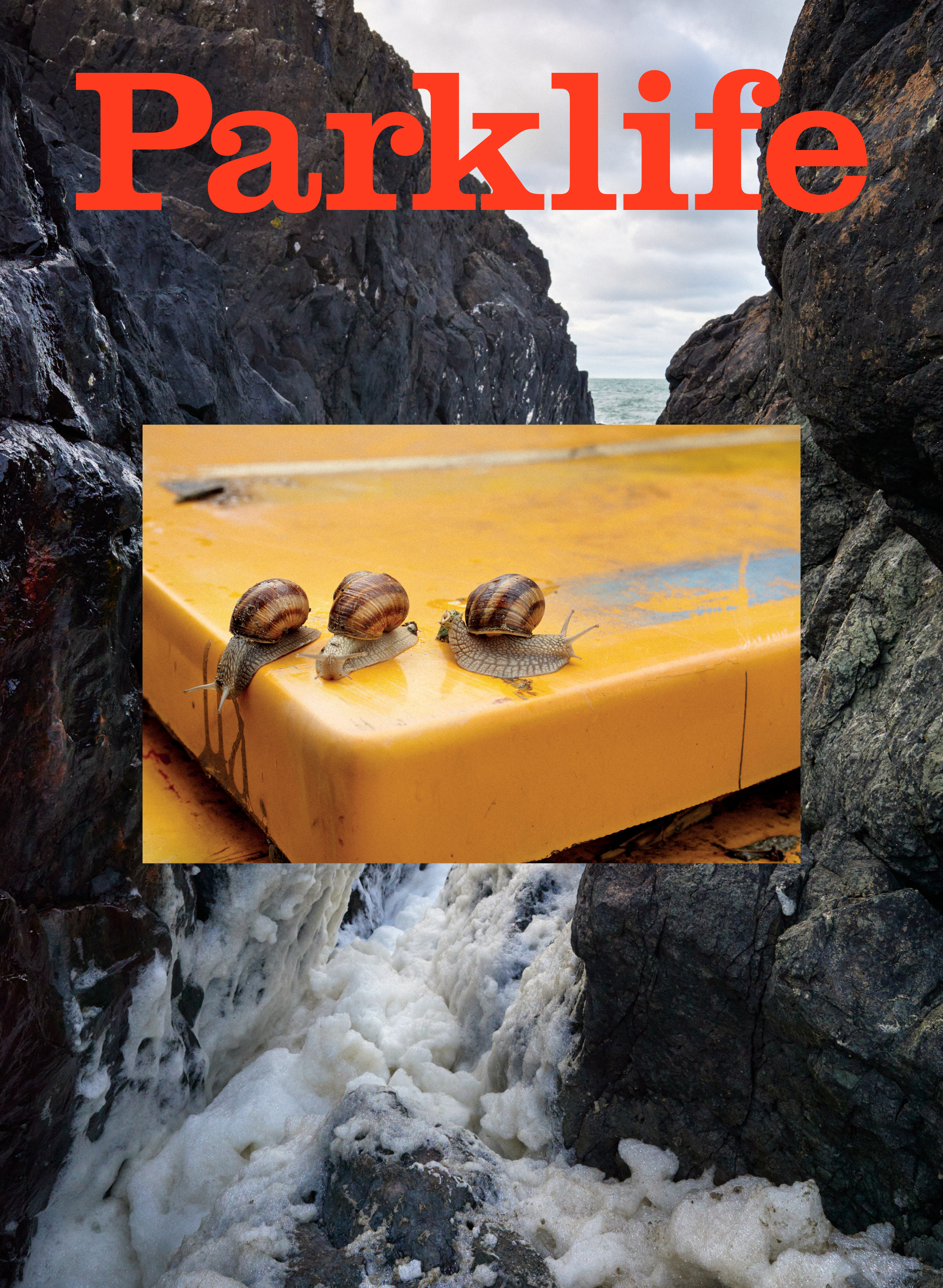04 Parklife 3
2025
Annual publication
Soft cover
20,5 x 28cm
n.168 pages
Color
Edition of n.400 copies
ISBN 979-12-210-8992-9
20,5 x 28cm
n.168 pages
Color
Edition of n.400 copies
ISBN 979-12-210-8992-9
A new nowhere
Third issue of Parklife begins with a shift of perspective—a turning outward. Not toward a landscape of memory or idealized escape, but toward the landscape as a question. A surface to be examined, unraveled, and reassembled.
Third issue of Parklife begins with a shift of perspective—a turning outward. Not toward a landscape of memory or idealized escape, but toward the landscape as a question. A surface to be examined, unraveled, and reassembled.
What does it mean to look outside—not just to see what is, but to imagine what might be formed from its fragments?
A new nowhere unfolds in the space between perception and projection, where what we know begins to blur into what we imagine. This “nowhere” is not defined by absence, but by possibility: a terrain still forming, shaped by the quiet gestures of observing, questioning, and redrawing the edges of the visible.
It becomes an act of definition—tentative, fragmentary, and open-ended. A constellation of images and intuitions orbiting around something still unnamed.
Here, the landscape is not framed to be admired, but to be experienced, inhabited and continually reimagined.
A new nowhere imagines a world where the boundaries between nature, architecture, labor, and daily life dissolve into a single, evolving fabric. A world where the external is not separate, but deeply implicated in how we live and act.
The future, then, is not a fixed point ahead, but a soft and continuous unfolding of the present—a movement shaped by how we choose to look and react.
The contributions in this issue do not seek to explain or define, but resonate like echoes of something that is still forming, just beyond our reach.
Each author traces a possible passage through the unknown—a fleeting geography shaped by visions still shifting, still unsettled.
What takes form is not a fixed image, but a moving landscape, one that invites interpretation as much as it resists it. In this space, to look is already to begin building—to construct meaning through perception, to assemble a place from what is not yet fully there.


